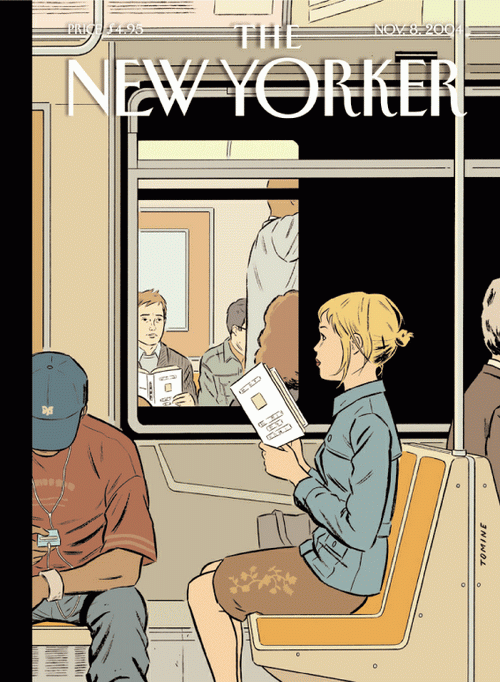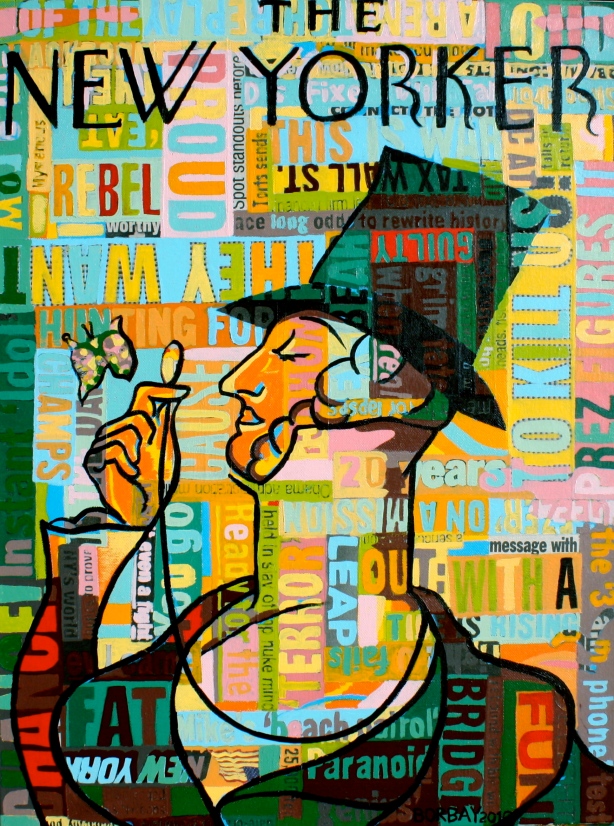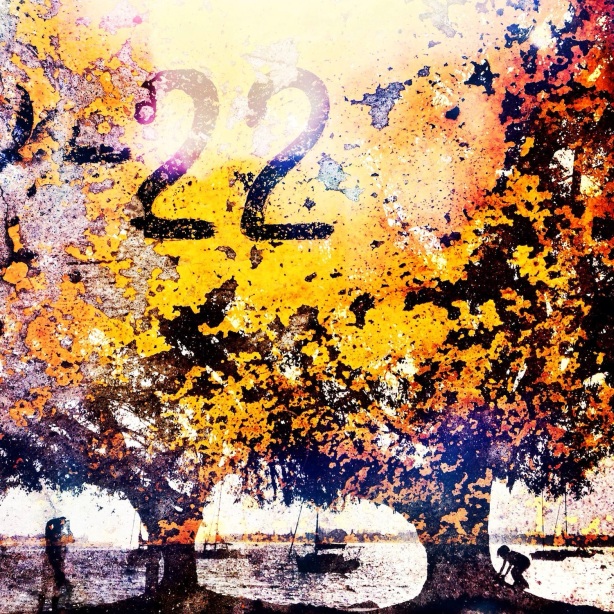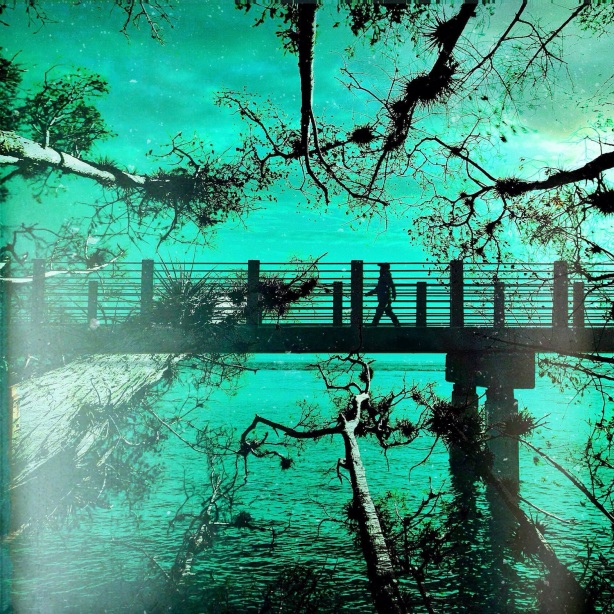Felt lucky today. Searching through The New Yorker, I found two ecxellent short stories, that I spent my morning reading about. The first one, called the “Midnight in Dostoevsky”, is about «constructed» realities and fragile friendships. It was written by Don DeLillo whose none other work have I ever read before. The second one was written by my beloved Gabriel García Márquez and was «excerpted from his 1975 novel of the same name (“The Autumn of the Patriarch») in the magazine’s September 27, 1976, issue. «In “The Autumn of the Patriarch,” García Márquez paints a surreal and fevered portrait of the unnamed General as a man trapped by his own monstrosity.»

Midnight in Dostoevsky
by Don DeLillo (November 30, 2009 issue)
«This was the day we saw the man in the hooded coat. We argued about the coat—loden coat, anorak, parka. It was our routine; we were ever ready to find a matter to contest. This was why the man had been born, to end up in this town wearing that coat. He was well ahead of us and walking slowly, hands clasped behind his back, a smallish figure turning now to enter a residential street and fade from view.»
http://www.newyorker.com/fiction/features/2009/11/30/091130fi_fiction_delillo?currentPage=all
P.S. If you’d like to read more about Don DeLillo, you can check out John Updike’s 2003 review of the novel “Cosmopolis” http://www.newyorker.com/archive/2003/03/31/030331crbo_books1

The Autumn Of The Patriarch
by Gabriel Garcia Marquez and Gregory Rabassa, (trans.) (September 27, 1976 issue)
Over the weekend the vultures got into the Presidential Palace by pecking through the screens on the balcony windows, and the flapping of their wings stirred up the stagnant time inside, and at dawn on Monday the city awoke out of its lethargy of centuries with the warm, soft breeze of a great man dead and rotting grandeur. Only then did we dare go in without attacking the crumbling walls of reinforced stone, as the more resolute had wished, and without using oxbows to knock the main door off its hinges, as others had proposed, because all that was needed was for someone to give a push and the great armored doors that had resisted the lombards of William Dampier during the building’s heroic days gave way. It was like entering the atmosphere of another age, because the air was thinner in the rubble pits of the vast lair of power, and the silence was more ancient, and things were hard to see in the decrepit light. All across the first courtyard, where the paving stones had given way to the underground thrust of weeds, we saw the disorder of the quarters of the guard who had fled, the weapons abandoned in their racks, the big, long rough-planked tables with plates containing the leftovers of the Sunday lunch that had been interrupted by panic, in the shadows we saw the annex where Government House had been, colored fungi and pale irises among the unpled briefs whose normal course had been slower than the pace of the driest of lives, in the center of the courtyard we saw the baptismal font where more than five generations had been christened with martial sacraments, in the rear we saw the ancient viceregal stable, which had been transformed into a coach house, and among the camellias and butterflies we saw the berlin from stirring days, the wagon from the time of the plague, the coach from the year of the comet, the hearse from Progress in Order, the sleepwalking limousine of the first century of peace, all in good shape under the dusty cobwebs and all painted with the colors of the flag. In the next courtyard, behind an iron grille, were the lunar-dust-covered rosebushes under which the lepers had slept during the great days of the house, and they had proliferated to such a degree in their abandonment that there was scarcely an odorless chink in that atmosphere of roses which mingled with the stench that came to us from the rear of the garden and the stink of the henhouse and the smell of dung and fermented urine from the cows and soldiers of the colonial basilica that had been converted into a milking barn. Opening a way through the asphyxiating growth we saw the arches of the gallery with potted carnations and sprigs of astromeda and pansies where the concubines’ quarters had been, and judging from the variety of domestic leftovers and the quantity of sewing machines we thought it possible that more than a thousand women had lived there with their crew of seven-month runts, we saw the battlefield disorder of the kitchens, clothes rotting in the sun by the washbasins, the open slit trench shared by concubines and soldiers, and in back we saw the Babylonian willows that had been carried alive from Asia Minor in great seagoing hothouses, with their own soil, their sap, and their drizzle, and behind the willows we saw Government House, immense and sad, where the vultures were still entering through the chipped blinds. We did not have to knock down the door, as we had thought, for the main door seemed to open by itself with just the push of a voice, so we went up to the main floor along a bare stone stairway where the opera-house carpeting had been torn by the hooves of the cows, and from the first vestibule on down to the private bedrooms we saw the ruined offices and reception rooms through which the brazen cows wandered, eating the velvet curtains and nibbling at the trim on the chairs, we saw heroic portraits of saints and soldiers thrown to the floor among broken furniture and fresh cow flops, we saw a dining room that had been eaten up by the cows, the music room profaned by the cows’ breakage, the domino tables destroyed, and the felt on the billiard tables cropped by the cows. Abandoned in a corner we saw the wind machine, the one which counterfeited any phenomenon from the four points of the compass, so that the people in the house could bear up under their nostalgia for the sea that had gone away, we saw birdcages hanging everywhere, still covered with the sleeping cloths put on some night the week before, and through the numerous windows we saw the broad and sleeping animal that was the city, still innocent of the historic Monday that was beginning to come to life, and beyond the city, up to the horizon, we saw the dead craters of harsh moon ash on the endless plain where the sea had been. In that forbidden corner which only a few people of privilege had ever come to know, we smelled the vultures’ carnage for the first time, we caught their age-old asthma, their premonitory instinct, and guiding ourselves by the foul smell from their flapping wings in the reception room we found the wormy shells of the cows, their female hindquarters repeated many times in the full-length mirrors, and then we pushed open a side door that connected with an office hidden in the wall, and there we saw him, in his denim uniform without insignia, in his boots, the gold spur on his left heel, older than all old men and all old animals on land or sea, and he was stretched out on the floor, face down, his right arm bent under his head as a pillow, as he had slept night after night every night of his ever so long life as a solitary despot.
http://www.newyorker.com/archive/1976/09/27/1976_09_27_034_TNY_CARDS_000320131?currentPage=all



